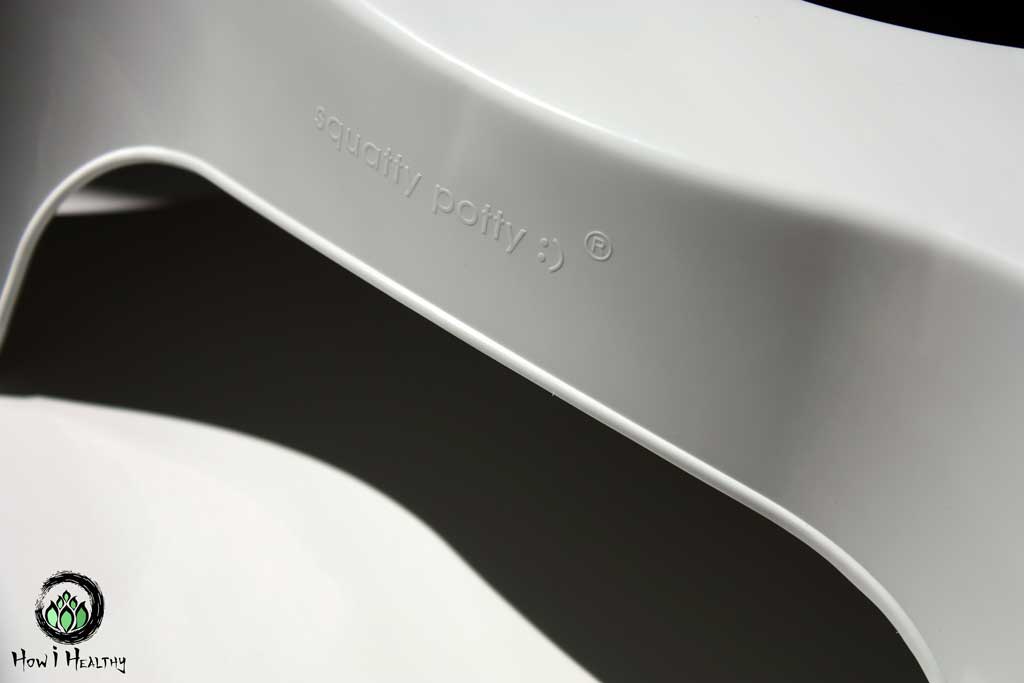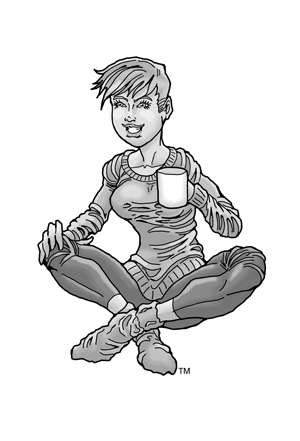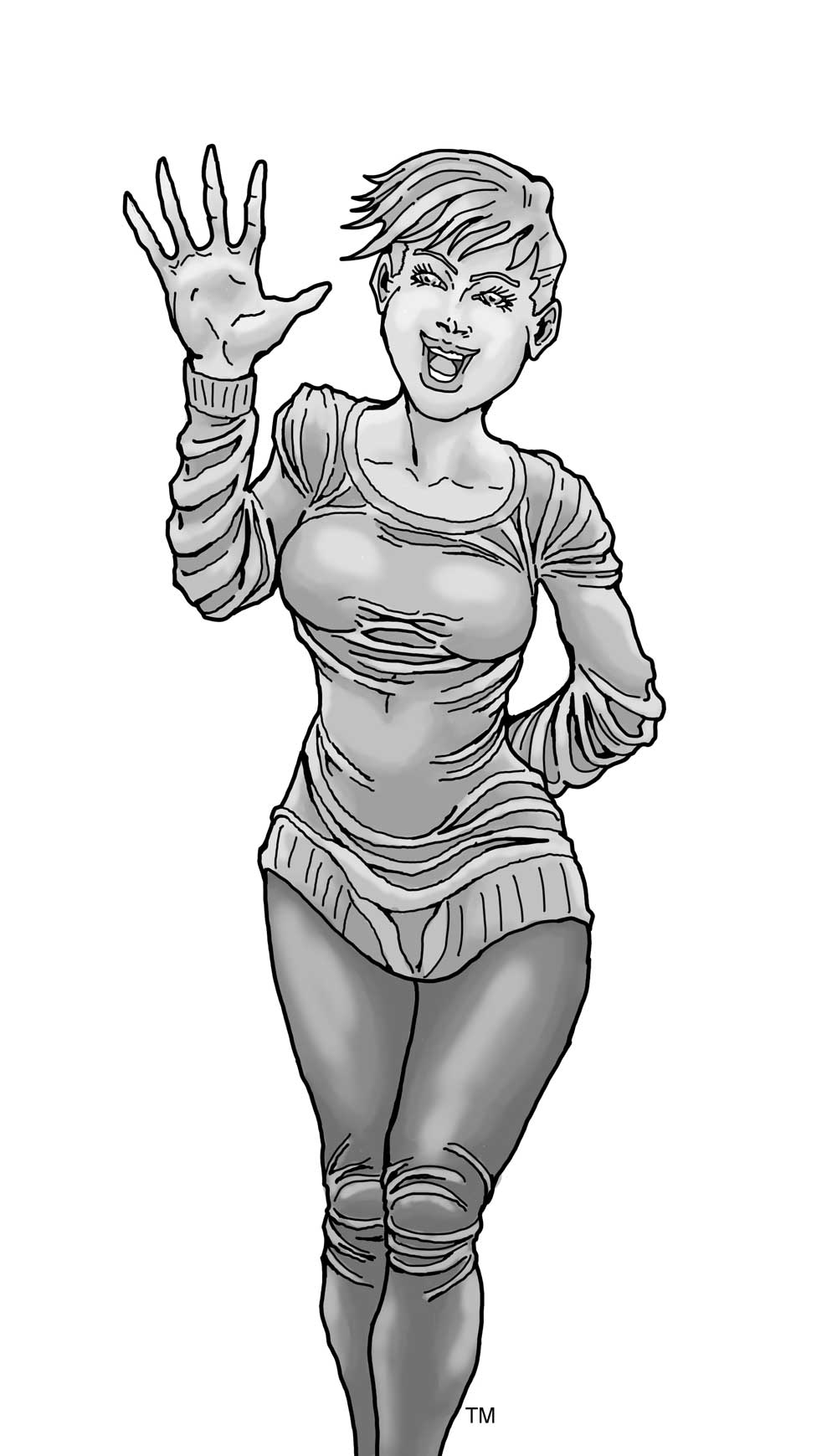Want to poop faster, reduce stain, and improve your overall experience?
Um, yes. Yes I do.
Introducing the Squatty Potty©.
It’s a nifty stool that not only elevates your legs into the optimal pooping position, but also elevates your overall poop performance.
It’s a stool for your stool.
No butts about it, it’s the best stool softener you never had to swallow.
But I’m getting ahead of myself, and using too many puns…
Let’s backtrack and talk about butts for a moment.
Why Does the Squatty Potty© Work?
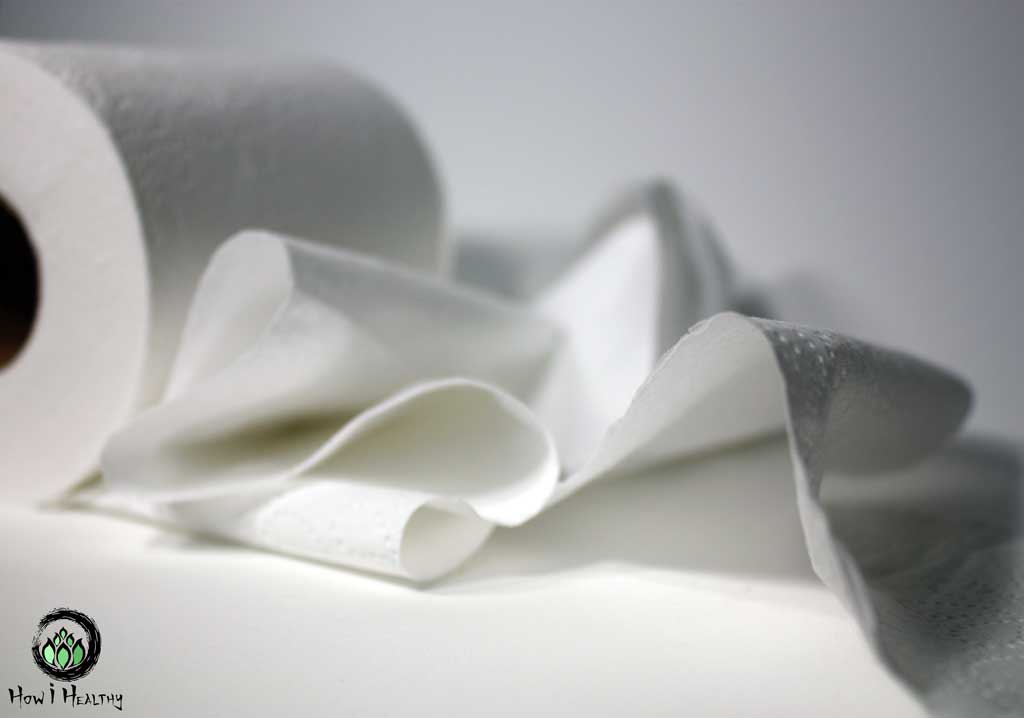
It might seem alarming, but(t) chances are most folk are not pooping effectively. Maybe even harming themselves.
No, I’m not talking about death-by-a-thousand-wipes, although I have a Bootyful Solution for that too.
I’m talking about sitting vs. squatting and our rectoanal canals, AKA the poop pipe.
When seated, the rectoanal canal kinks up to approximately 90-degrees. That sharp angle makes pooping difficult. (2)
But squatting straightens the rectoanal canal, allowing for an easy getaway. (2)
Like a slide at the playground, the straight ones go faster and more smoothly than the twisty ones.
For most Western countries, the common method of pooping is sitting on a toilet. This creates a 90-degree angle of the hips. In other parts of the world, the preferred method is typically squatting. (2, 8)
One study compared this style of sitting-while-pooping with squat-style toilets. The results? The squat-style toilet not only opened the anorectal angle “much wider”, it emptied the colon more completely. And in half the time. (2)
In another study, researchers compared the poop performance of three different positions:
- Sitting with 90-degree hip flexion
- Sitting with 60-degree hip flexion
- Squatting with 22.5-degree hip flexion
Conclusion: That the greater the hip flexion the straighter the rectoanal canal was. A similar conclusion compared to other studies on the matter. (1, 2, 3)
A straighter colon means an easier ride out. Or “less strain required for defecation”, as the study so eloquently stated. (1)
Straining, or “bearing down” might not seem like a big issue. But straining can cause a rapid rise and fall of blood pressure. Syncope or cardiac arrest can occur while pooping, especially in vulnerable populations. (4, 5, 7)
One study found that among 907 cardiac arrest patients 10% occurred on the toilet. (6)
One more health bonus: communities who prefer squatting have fewer cases of hemorrhoids, constipation, and hiatus hernia. (3)
The Squatty Potty© Science
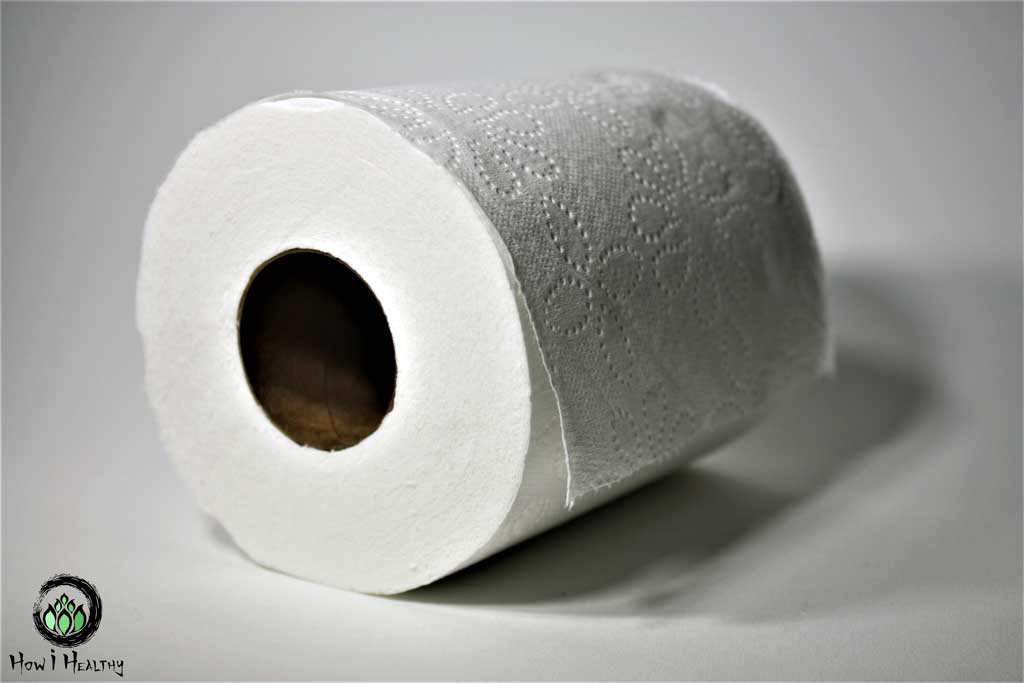
Squatting is more than just a fad, it’s a movement. A bowel movement. And it’s got science backing it up. My favorite kind!
While I’d love to have a squat-style floor toilet, I don’t think my apartment would much care for it.
That’s where the Squatty Potty© comes in.
This nifty little stool tucks right under the toilet and offers a perch to prop your feet. Making your toilet the best seat in the house.
Most stools come in 7” or 9” heights. And there’s lots of different materials to pick from. When I bought my Squatty Potty© there weren’t so many options, hence my plastic one in the photos.
But if I were shopping today, I’d go for this Multi-height Bamboo Squatty Potty©.
The Squatty Potty© was the “defecation postural modification device” used in a study. Researches documented the experiences of 52 participants.
The results?
The Squatty Potty©:
- Increased bowel emptiness by 85%
- Reduced duration by 71%
- Reduced strain by 90%
(8)
Squatty Potty© has many styles to blend in or stand out in your bathroom including the Porta Squatty™ for all your mobile pooping needs! Complete with a discreet carry bag!
The Bottom Line
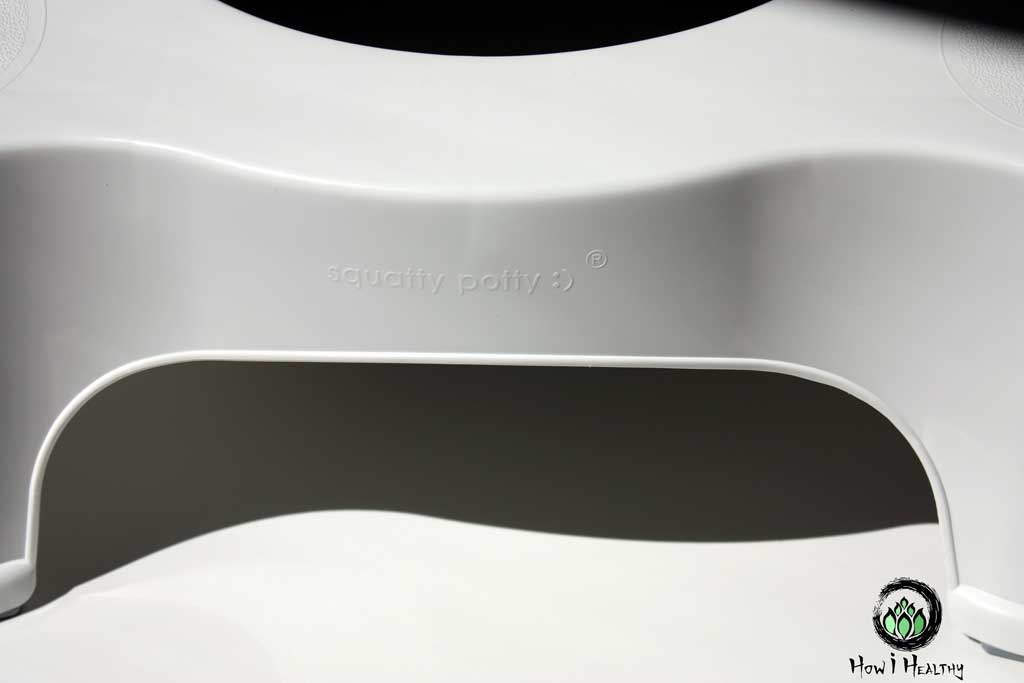
We poop better when we squat. That’s just science. (1, 2, 3, 8)
Most toilets ain’t designed for squatting. (2, 8)
Instead we sit, kinking our colon and working way harder than we need to. (1, 2, 3)
There’s a better way to poop. A less straining, faster, and more successful way to poop.
Use a stool to help your stool. (8)
It’s the po(o)p-cultural movement for bowel movements.
It’s the Bamboo Squatty Potty©. It flips to accommodate different height preferences!
In a study, the Squatty Potty©:
- Increased bowel emptiness by 85%.
- Reduced duration by 71%.
- Reduced stain by 90%.
(8)
So, pooping easier is as easy as 1, 2, 3:
- Pop a squat on The Squatty Potty©.
- Do the doo.
- Get on with your day.
Stop stalling and start stool-ing!
Want more ways to boost your butt experience? Check out my hole-listic Kickass Guide to Bidets. Full of history, science, environmental considerations, & more!
That’s How i Healthy!
-Artemis
- Sakakibara, Ryuji, et al. “Influence of Body Position on Defecation in Humans.” LUTS: Lower Urinary Tract Symptoms, vol. 2, no. 1, 2010, pp. 16–21., doi:10.1111/j.1757-5672.2009.00057.x. https://pubmed.ncbi.nlm.nih.gov/26676214/
- Rad, Saeed. “IMPACT OF ETHNIC HABITS ON DEFECOGRAPHIC MEASUREMENTS .” Department of Radiology, Tabriz University of Medical Sciences, Archives of Iranian Medicine, no. 5, ser. 2, Apr. 2002, pp. 115–117. 2. https://www.researchgate.net/publication/238107601_Impact_of_ethnic_habits_on_defecographic_measurements
- SIKIROV, Dov. “Comparison of Straining During Defecation in Three Positions.” Digestive Diseases and Sciences, vol. 48, no. 7, July 2003, pp. 1201–1205.
- Tigga, Maureen P. “An Unusual Case of Defecation Syncope.” Journal of mid-life health 10,2 (2019): 99-100. doi:10.4103/jmh.JMH_2_19. https://pubmed.ncbi.nlm.nih.gov/12870773/
- Mikhail, M S et al. “Atrioventricular block secondary to straining.” Critical care medicine 15,7 (1987): 705-6. doi:10.1097/00003246-198707000-00017. https://pubmed.ncbi.nlm.nih.gov/3595161/
- Inamasu, Joji, and Satoru Miyatake. “Cardiac arrest in the toilet: clinical characteristics and resuscitation profiles.” Environmental health and preventive medicine 18,2 (2013): 130-5. doi:10.1007/s12199-012-0301-y. https://link.springer.com/article/10.1007/s12199-012-0301-y
- Kapoor, W N et al. “Defecation syncope. A symptom with multiple etiologies.” Archives of internal medicine 146,12 (1986): 2377-9. doi:10.1001/archinte.146.12.2377. https://pubmed.ncbi.nlm.nih.gov/3778072/
- Modi, Rohan M., et al. “Implementation of a Defecation Posture Modification Device.” Journal of Clinical Gastroenterology, vol. 53, no. 3, 2019, pp. 216–219., doi:10.1097/mcg.0000000000001143. https://pubmed.ncbi.nlm.nih.gov/30346317/

